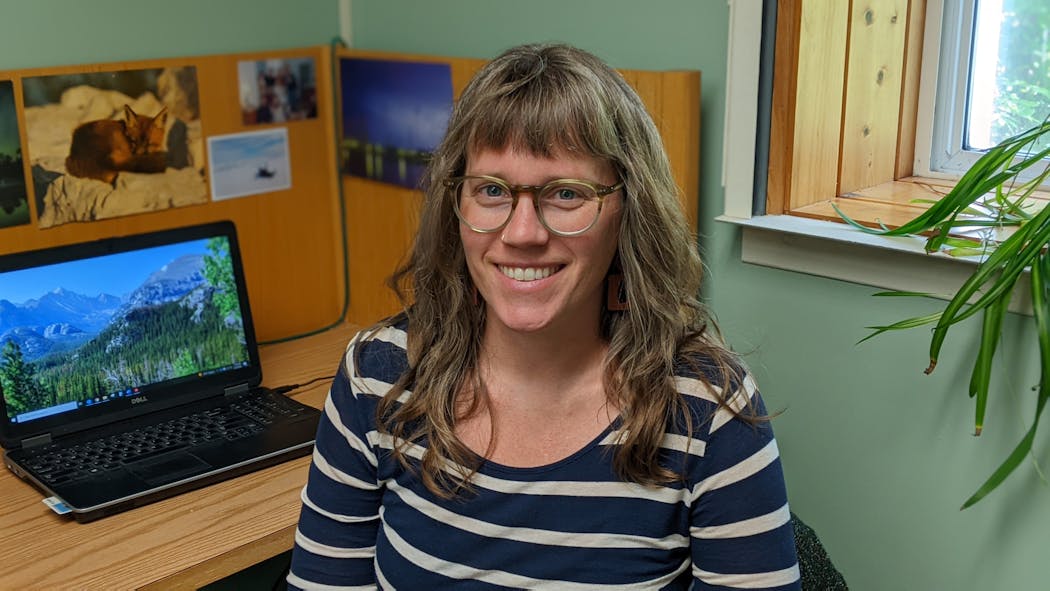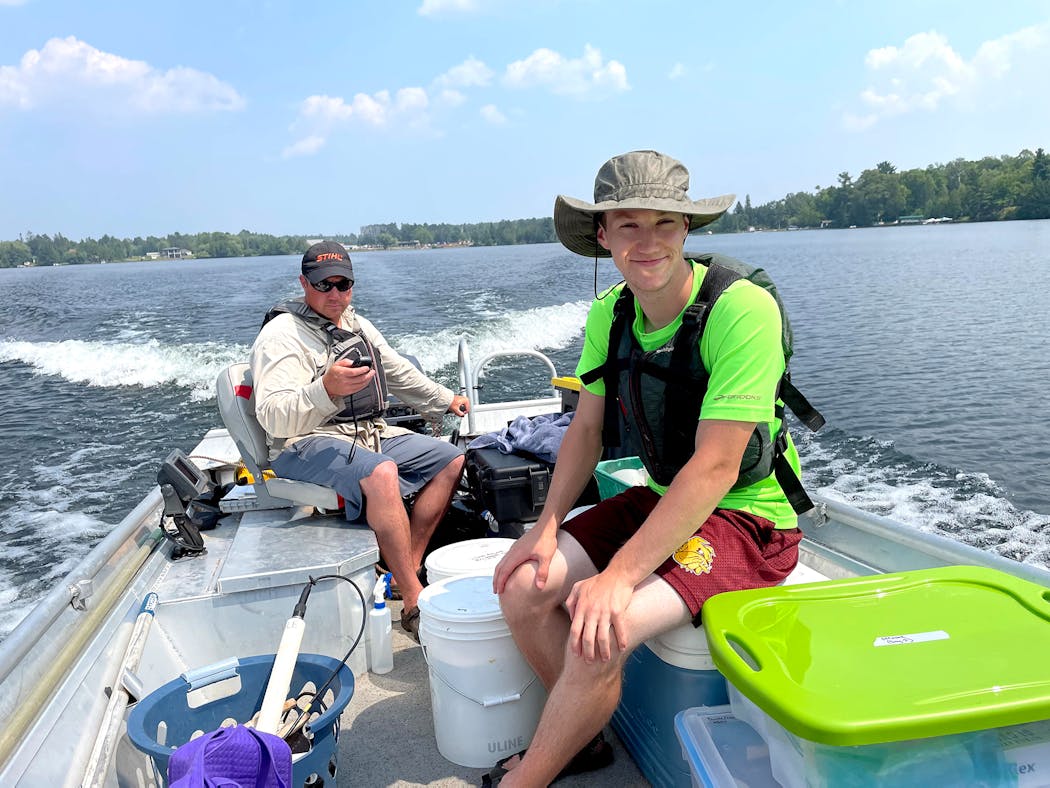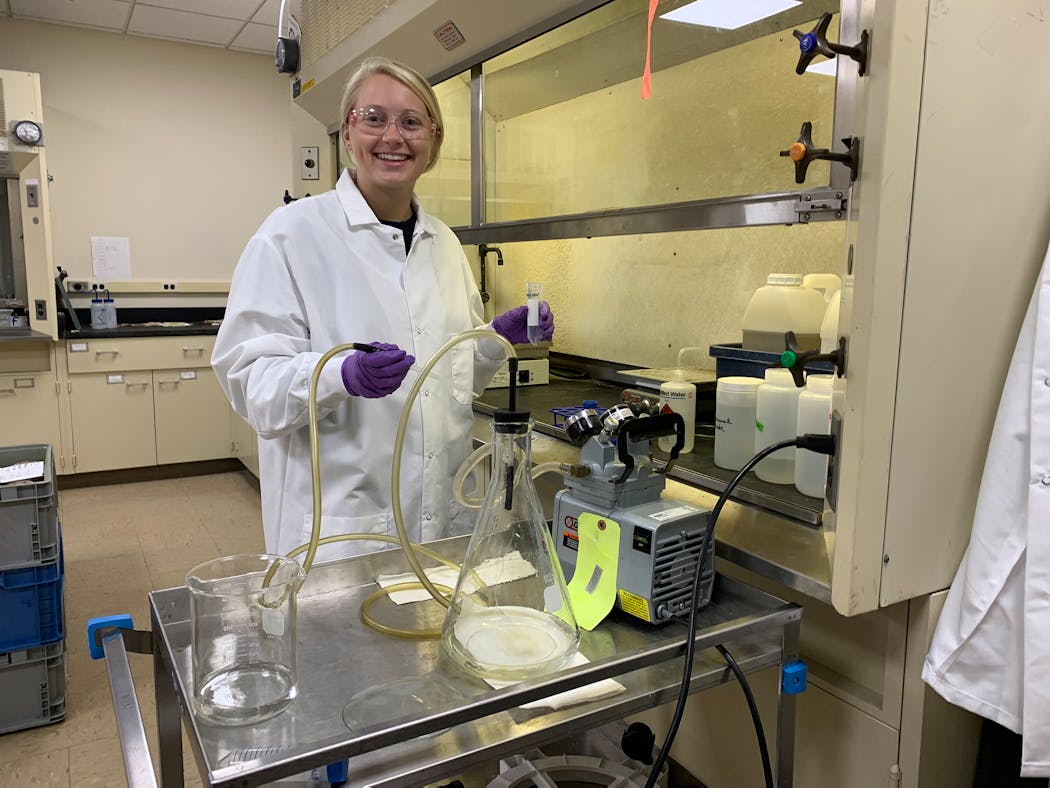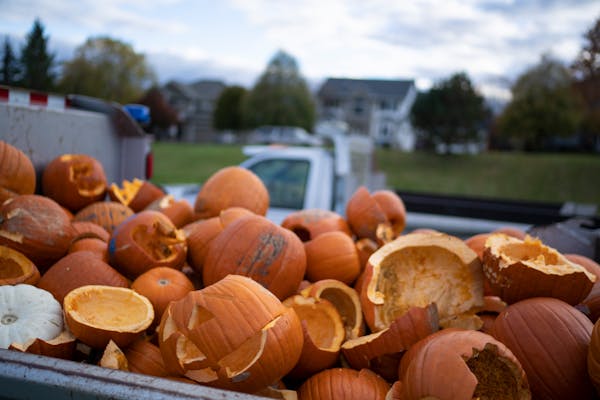Researching complex fields, from algae and water quality to the effect of forest carnivores on one another, five students are representative of the other 40 at the Natural Resources Research Institute (NRRI) in Duluth and under the umbrella of the University of Minnesota. A second lab is in Coleraine.
They bring conviction and smarts to their fieldwork, charged with finding solutions for businesses, nongovernmental organizations and others in the service of natural resources.
"Bringing the energy and questions and enthusiasm and curiosity drives science," said NRRI Executive Director Rolf Weberg. "I can't stress enough that we have that group of kids here."
Weberg can relate to the impact of what he calls the students' "experiential research learning." His as a young adult (he received a chemistry degree from Minnesota Duluth, followed by post-doctoral studies) set up a long career in research and development at DuPont, before he came to NRRI in 2014.
Here are spotlights of five student researchers:
Understanding the bobcat-fisher dynamic
Michael McMahon, 28
Ph.D. student, integrated biosciences; focus on fisher and bobcat ecology and their relationship
Why did you want to do this research?
Because of my passion for the outdoors and my interest in carnivore species and predator ecology. I am excited to see the role that our findings may play in predator conservation and management in our state. As a lifelong Minnesota outdoorsman, I am also thrilled to be able to do this research in beautiful northern Minnesota, where we conduct our fieldwork.
Why does it matter?
It focuses on improving our understanding of how different predators interact with one another and will inform the management and conservation of our state's wildlife. In the last two decades, Minnesota's fisher population has experienced a dramatic decline within its core region in Minnesota, while at the same time the bobcat population has nearly doubled. It is essential to research and understand the habitat needs of these two carnivores to uncover any effect these species may be having on each other and to ensure the successful management and long-term persistence of both of these culturally and economically important species. The results of this research will aid managers by describing the habitat needs of fishers and bobcats and could affect their decisions.
Where culture and ecosystems overlap
Molly Wick, 37
Ph.D. student, water resources science
Why did you want to do this research?
I grew up on Lake Michigan in Wisconsin and moved to Duluth 11 years ago to do a master's degree in water resource science, studying erosion in streams in the area. After my master's, I worked for about seven years, first coordinating habitat restoration projects in the St. Louis River and then assessing ecosystem health in the larger Great Lakes as a fellow stationed at the Environmental Protection Agency's Great Lakes Toxicology and Ecology Lab in Duluth. I realized how entangled our social systems are in the environment. I realized that all ecosystem assessments depend on a value judgment for what constitutes "healthy." In other words, nature just does nature; people are the ones who decide what is considered "good" or "bad." I became interested in how we can improve environmental management through a better understanding of the inherent connections within social-ecological systems, rather than trying to study the environment as separate from people, which is much more common in environmental science. That led me to pursue my Ph.D. research on cultural ecosystem services, which are the intangible ways that people benefit from the environment (spirituality, tradition, sense of place, mental health, inspiration, recreation). My Ph.D. focuses on local aquatic ecosystems: the St. Louis River estuary, Lake Superior, and tributary streams. It includes a public survey. At the project website, z.umn.edu/waterwaybenefits, people can learn more, and residents of the Twin Ports region can take the Waterway Benefits Survey.
Why does this research matter?
A huge amount of funding is going into cleaning up degraded and contaminated Great Lakes coastal areas, including the St. Louis River estuary, through the federal government's Great Lakes Restoration Initiative. The recent Bipartisan Infrastructure Law included $1 billion for the Great Lakes Restoration Initiative. However, there's a poor understanding of how those investments benefit communities aside from economic impacts. It is also unclear who in the community benefits — are the investment outcomes equitable? The goal of my research is to better understand how people experience those intangible benefits from the estuary and the water, and how various components of their identity (age, ethnicity, race, gender, income, culture) influence their experiences with the estuary and the water.
Microorganisms, macro impact
Collin Krochalk, 23
Biology undergraduate, with emphasis on ecology, evolution and behavior
Why did you want to do this research?
I love learning about how organisms interact with the environments they live in. Some of the smallest organisms, collectively in their populations, can have some of the biggest impacts on the quality and sustainability of their ecosystems. These interactions are fascinating and always surprising to me.
Why does this research matter?
Microorganisms or even bits of DNA from larger organisms in the environment can be collected and analyzed to indicate ecosystem quality and change. These changes help us understand the quality of our natural resources and how they may be changing. In all, I enjoy seeing how being involved in the data preparation, collection, and reporting process can lead to more ecologically sustainable ways of accessing our natural resources.
Innovating ways to manage water pollution
Matthew Berens, 29
Post-doctorate student, environmental biogeochemistry and engineering
Why did you want to do this research?
My research explores ways that we can use naturally occurring chemical and biological reactions to manage and improve ecosystems impacted by mercury and sulfur pollution. Our work is focused on understanding these reactions first at a molecular scale to then create the engineering technologies needed to address pollution at a watershed scale. My goal as a scientist is to address environmental challenges that threaten the health, equity and sustainability of our natural resources. It has allowed me to work together with a highly skilled and multidisciplinary team of researchers who each bring their own unique skills to address a common issue. For example, my background is in environmental chemistry, but I have been able to work closely with microbiologists, ecologists and foresters to develop new environmental remediation technologies.
Why does this research matter?
This work is important for managing and improving our natural resources for sustainable production, consumption, life and recreation. For example, the growing need for access to clean water has been threatened by different types of environmental pollution. By creating innovative cleanup technologies, we can help ensure that life above and below ground has equal access to clean land and water.
Fashioning high-tech tools for managers
Megan Quade, 34
Undergraduate, Geographic Information Science (GIS) and Environment, Sustainability, and Geography
Why did you want to do this research?
I work primarily with spatial data in the research institute's GIS lab. As a visual learner, I believe spatial data can more easily convey information and help people interpret and comprehend it. However, GIS software can be expensive and complicated to use. Through supporting access to spatial data and analysis tools, I work to promote enhanced research capabilities.
Why does this research matter?
Most of my work focuses on data management for the Minnesota Natural Resource Atlas, an online mapping tool that can be used for natural resource planning, management and research. The Atlas offers over 500 data layers and basic GIS capabilities that enable organizations, such as soil and water conservation districts, to utilize spatial data. Small and/or nonprofit organizations often lack the personnel and financial resources to incorporate spatial analysis into their work. The Atlas' mapping tool is a free, user-friendly application that anyone can access. It is available at mnatlas.org.
Getting to the source of algae blooms
Leah Egan, 25
Graduate student; freshwater phytoplankton (microscopic plants) ecology with an emphasis in cyanobacteria taxonomy and phenology
Why did you want to do this research?
My passion specifically for water quality began during my undergraduate career at Wisconsin-Stevens Point, where I worked as a student laboratory technician in the Water and Environmental Analysis Lab analyzing surface and groundwater samples for trace level contaminants. I became more aware of water pollution and contamination sources across freshwater systems and was fascinated with the various water quality analyses conducted in the lab. I decided this was a passion I wanted to further purse and continued my education at Minnesota Duluth to obtain a master's of science studying cyanobacteria harmful algal blooms, a common algal nuisance that forms thick, green surface scums that produce potentially harmful compounds.
Why does this research matter?
Algae are often used as indicators of water quality and contamination across aquatic systems. Monitoring of algal trends provides information on anthropogenic inputs and influences that can further inform managers on where pollution sources need to be addressed and reduced to mitigate future climate change.

Taylor Pendrith rolls into second-round lead at 3M Open
Coughlin holds into CPKC Women's Open lead; Canadian star Henderson derailed by closing bogeys








